If you happen to have a long layover in Japan, then Narita Shinshoji Temple is the perfect place to visit while you are there. All you have to do is hop on the train from Narita airport, and it’s only one train stop (8 minutes) away. This is the temple we go to most often when we visit Japan and we truly feel like it’s the best temple to visit because it’s not as crowded as the other ones in Tokyo or Kyoto.
Once you get off at the train station, it's about a 15-minute walk to the entrance of the temple. Don't worry if you are afraid of getting lost. The street referred to as Omotesando is easy to find and leads you straight to the temple, but if you need navigation there is free wifi as soon as you get off at the train station. The walk to the temple will go by really fast or really slow depending on what you do. For us, it usually takes about 30 minutes because we always end up stopping at the various shops along the way. If you walk without stopping (trust us, this won't happen if it's your first time), it will take about 15 minutes.

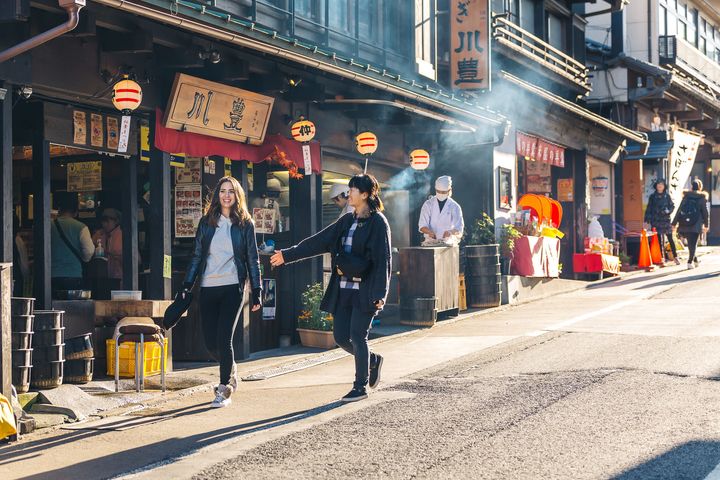
RAN INTO MY FRIEND FROM JUNIOR HIGH! SMALL WORLD. WELL, NOT REALLY SINCE IT'S MY HOMETOWN :)
We visit almost every year we go home and always try something new at one of the small food shops. Our favorites are the yaki dango (Japanese grilled rice flour dumpling) and senbei (Japanese rice crackers) shops. Crystal tried kuri (Japanese chestnut) for the first time on this trip too. You can watch our video in the beginning of this post eating these traditional Japanese foods.
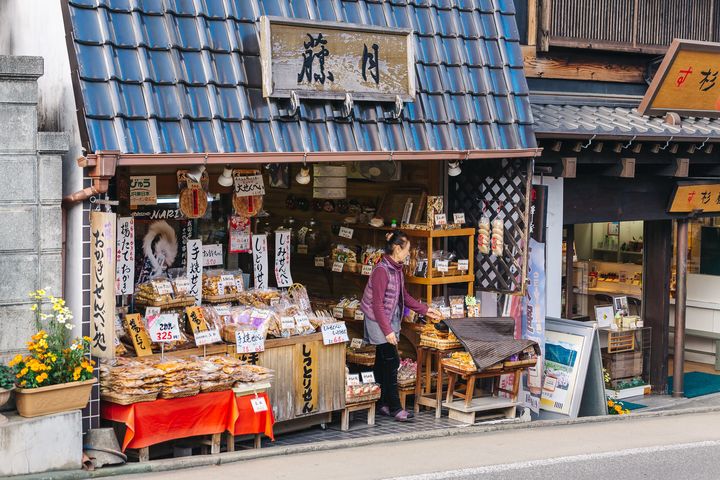

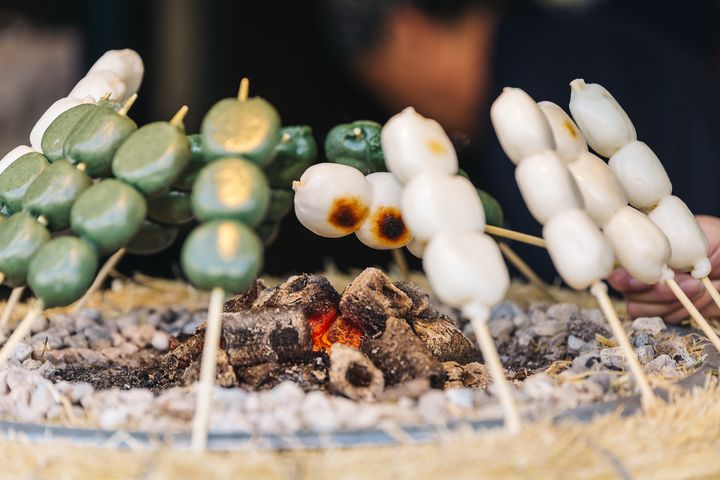
This year I tried the green tea flavored yaki dango with a pumpkin paste topping at one of the shops from the friendliest guy. He told us that he usually gets into trouble when he does peace signs in his photos. His jokes were cracking us up. Definitely stop by this place when you're visiting the Narita Temple.

I COULDN'T DECIDE ON A TOPPING, SO HE GAVE ME SAMPLES TO TRY
As you are walking down Omotesando, you will notice various fresh grilled eel restaurants. Some people visit this area just to eat the eel. We wish we were fans of eel because it smells so delicious and it's super fresh. The chefs prepare the eel outside the restaurant from start to finish and it is a site not to be missed.
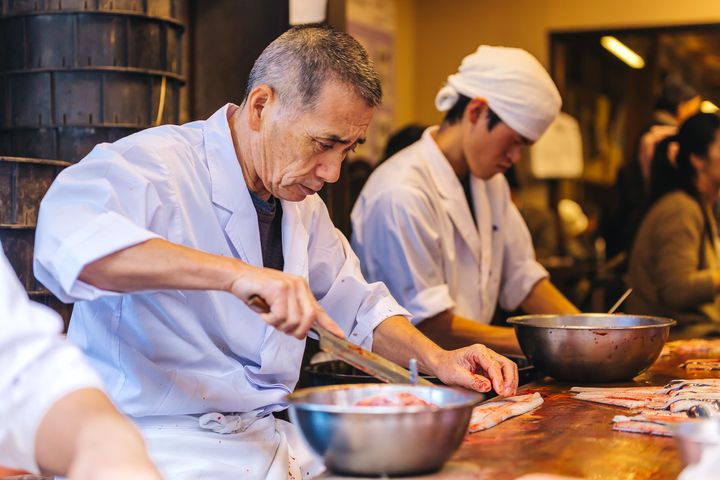
WE THINK THIS GUY IS THE EEL CUTTING MASTER. HE IS HERE EVERY YEAR WE VISIT.
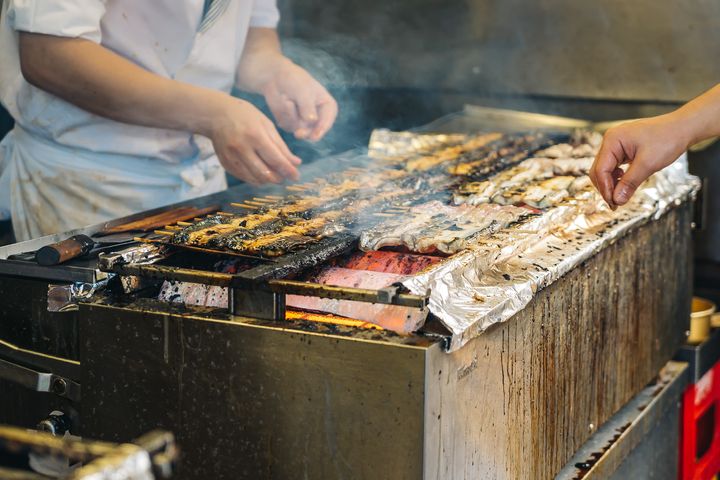
The path to the temple is a downward slope, so once you get to the bottom, you will arrive at the entrance to the temple. You can't miss it. The entrance is huge! The grounds are massive, so on this day, we only explored the So-mon Gate (the entrance), Ni-o-mon Gate, three-storied Pagoda, and the Great Main Hall. This isn't even half of what Narita-san has to offer.


When we entered the area that leads to the Great Main Hall, we stopped by the jokoro first, which is a large incense burner, to catch the smoke rising from the burner. This smoke is believed to give people a healing effect. So, for example, if your back is hurting, you will wave the smoke towards your back to help it heal. You will also see people waving the smoke towards their head on the belief that they will become smarter.
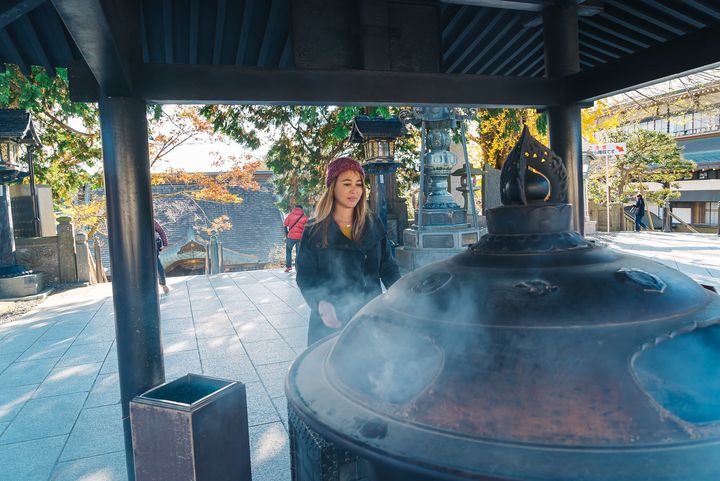
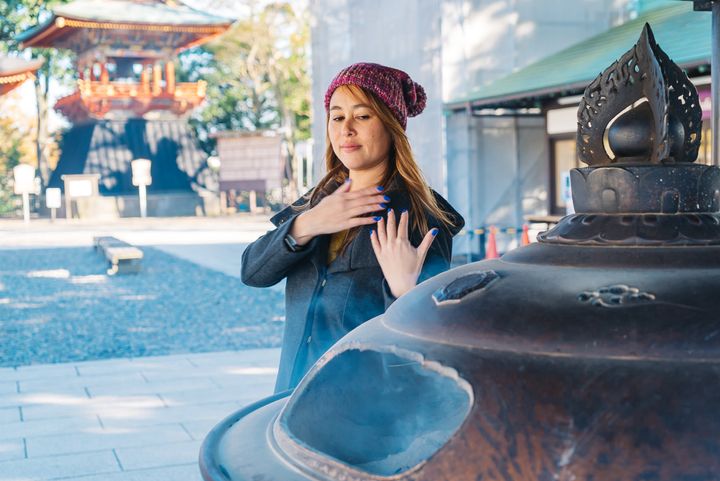
When you make your way up to the Great Main Hall, you will see a large offertory box where you make a donation (any amount is fine) and pray. The traditional and proper way to pray at a temple is 1) Bow twice, 2) Make your wish in your heart, 3) Clap twice and 4) Bow once more.
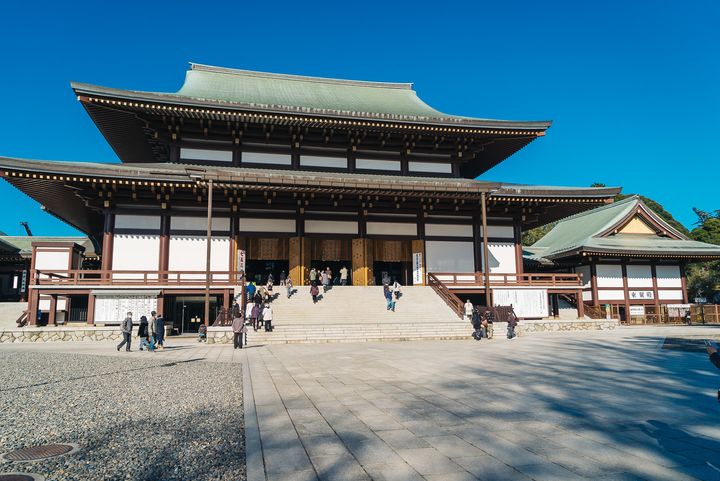
After we prayed, we made our way down to the omikuji, which is a Japanese fortune-telling paper. You place your offering in the box and open a drawer that holds the fortune-telling paper. For the tourists, all of the fortunes are translated into English on the back of the fortune paper. I got "Excellent Luck" and was super happy because the year prior, my fortune wasn't so great. Crystal, on the other hand, selected "Worst Luck". In this case, you don't want to hold onto your bad fortune, so you tie it onto one of the posts they have on the grounds. If you have good fortune, you want to keep it until you pick another one the following year. When you pick your new fortune, then you can get rid of the old one by tying it to the post.
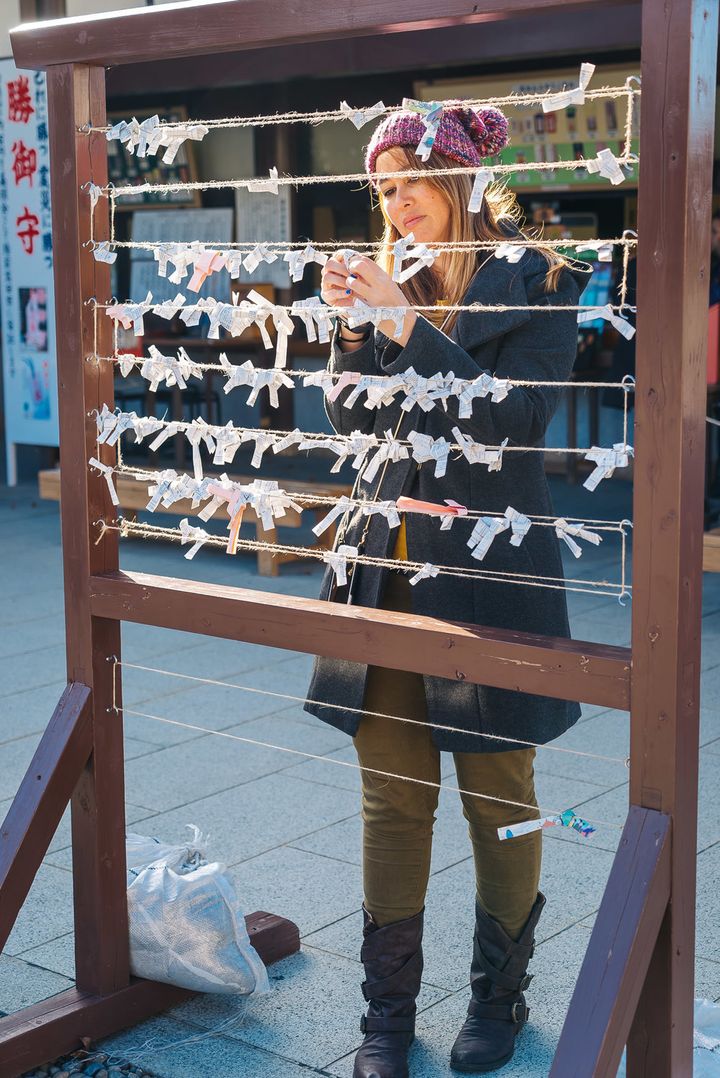
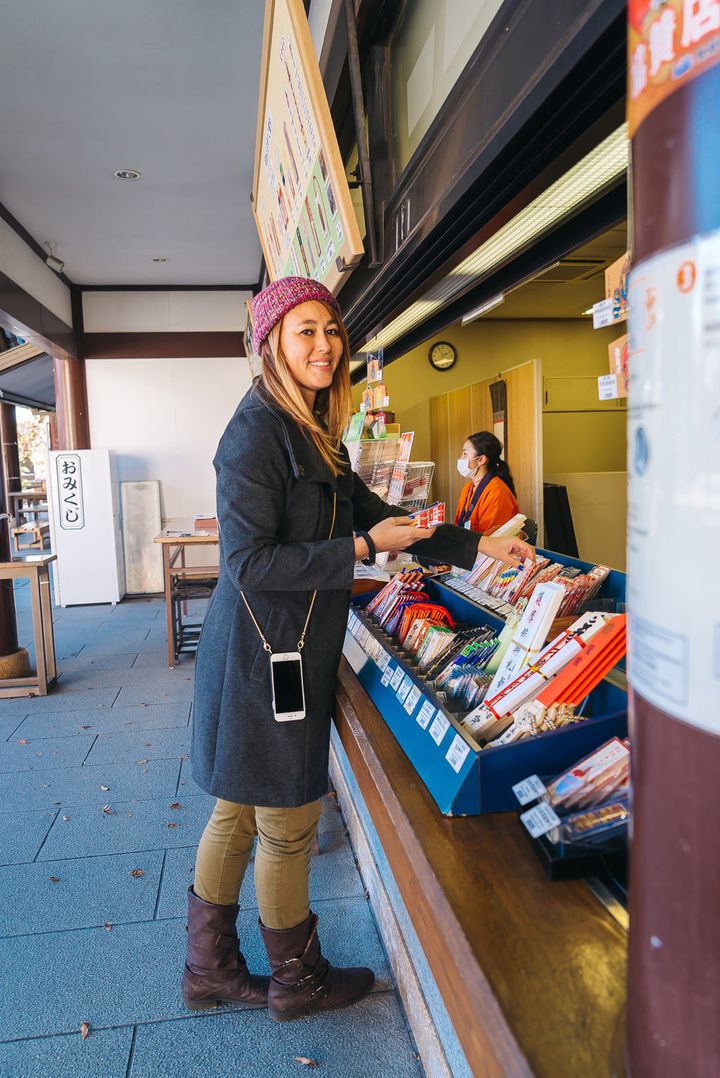
Another tradition at the temple is to buy omamoris, which are Japanese good luck charms. They are said to provide various forms of luck or protection. You can buy general omamoris or specific ones in good luck with exams to health.
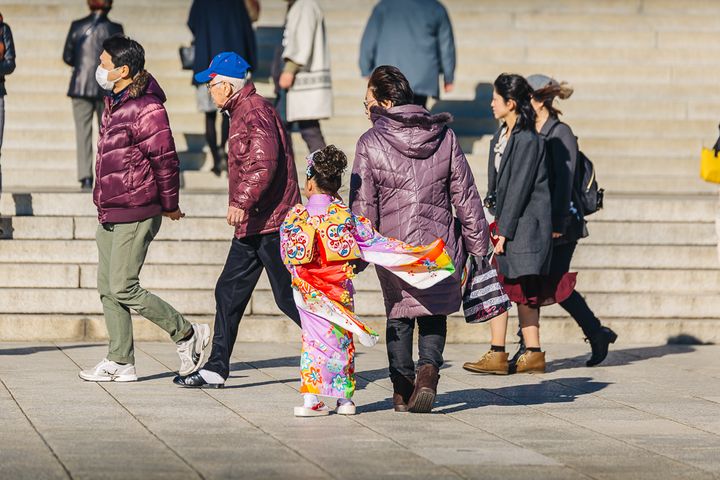
THIS GIRL IS DRESSED UP IN HER KIMONO CELEBRATING SHICHI-GO-SAN
During Spring and Autumn, the Narita-san Park is gorgeous and a great area to picnic under the cherry blossoms or foliage. It was really cold the day we went (it had just snowed a few days prior), so after Crystal tied her bad luck away, we exited the temple and made our way back up Omotesando.

A SOUVENIR SHOP ALONG OMETANDO. THESE ARE CUTE CHOPSTICK HOLDERS.
On the way back, we stopped by a few shops to buy some souvenirs. We recommend doing this after your visit to the temple so that you don't have to carry it around with you.
Narita-san welcomes all visitors and it's absolutely free. What are some of the temples or shrines you have visited in Japan?
Written by Candy Waltrip from Travel Pockets.
Read more about Candy & Crystal’s travels on their blog,Travel Pockets, or follow their adventures on Instagram.
